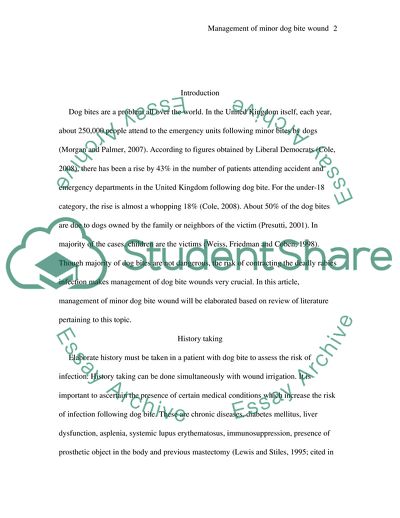Cite this document
(Management of Minor Dog Bite Wound Literature review, n.d.)
Management of Minor Dog Bite Wound Literature review. Retrieved from https://studentshare.org/health-sciences-medicine/1727809-the-management-of-a-dog-bite-wound
Management of Minor Dog Bite Wound Literature review. Retrieved from https://studentshare.org/health-sciences-medicine/1727809-the-management-of-a-dog-bite-wound
(Management of Minor Dog Bite Wound Literature Review)
Management of Minor Dog Bite Wound Literature Review. https://studentshare.org/health-sciences-medicine/1727809-the-management-of-a-dog-bite-wound.
Management of Minor Dog Bite Wound Literature Review. https://studentshare.org/health-sciences-medicine/1727809-the-management-of-a-dog-bite-wound.
“Management of Minor Dog Bite Wound Literature Review”. https://studentshare.org/health-sciences-medicine/1727809-the-management-of-a-dog-bite-wound.


